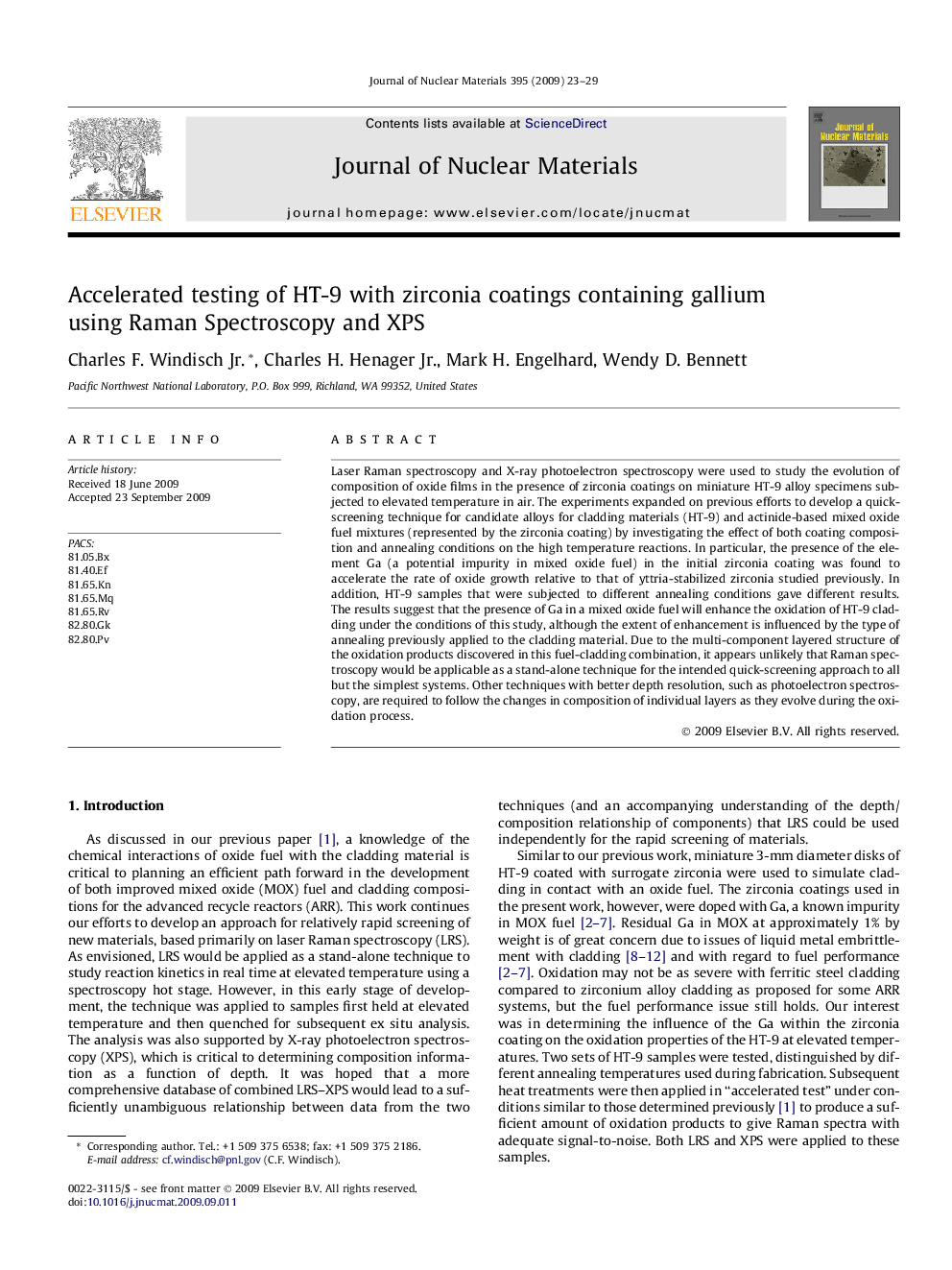| Article ID | Journal | Published Year | Pages | File Type |
|---|---|---|---|---|
| 1567623 | Journal of Nuclear Materials | 2009 | 7 Pages |
Laser Raman spectroscopy and X-ray photoelectron spectroscopy were used to study the evolution of composition of oxide films in the presence of zirconia coatings on miniature HT-9 alloy specimens subjected to elevated temperature in air. The experiments expanded on previous efforts to develop a quick-screening technique for candidate alloys for cladding materials (HT-9) and actinide-based mixed oxide fuel mixtures (represented by the zirconia coating) by investigating the effect of both coating composition and annealing conditions on the high temperature reactions. In particular, the presence of the element Ga (a potential impurity in mixed oxide fuel) in the initial zirconia coating was found to accelerate the rate of oxide growth relative to that of yttria-stabilized zirconia studied previously. In addition, HT-9 samples that were subjected to different annealing conditions gave different results. The results suggest that the presence of Ga in a mixed oxide fuel will enhance the oxidation of HT-9 cladding under the conditions of this study, although the extent of enhancement is influenced by the type of annealing previously applied to the cladding material. Due to the multi-component layered structure of the oxidation products discovered in this fuel-cladding combination, it appears unlikely that Raman spectroscopy would be applicable as a stand-alone technique for the intended quick-screening approach to all but the simplest systems. Other techniques with better depth resolution, such as photoelectron spectroscopy, are required to follow the changes in composition of individual layers as they evolve during the oxidation process.
